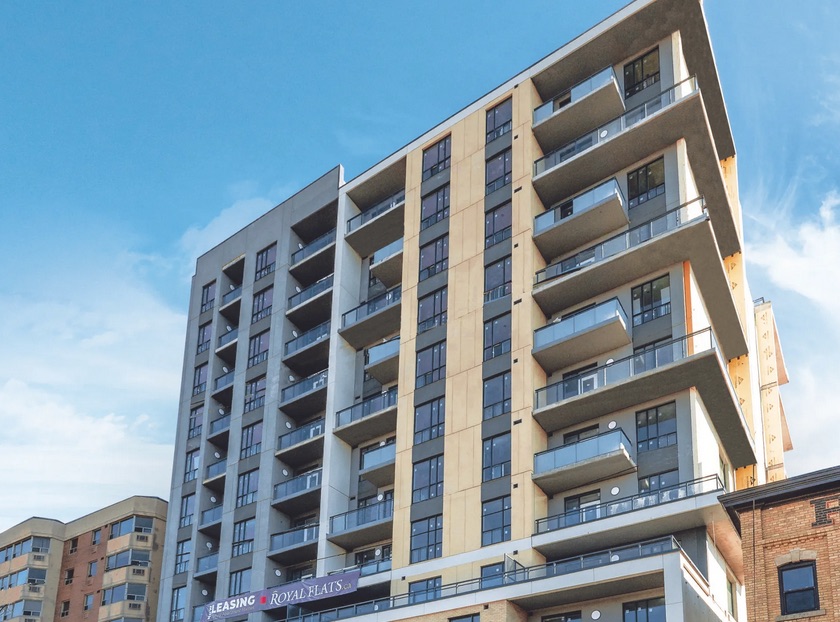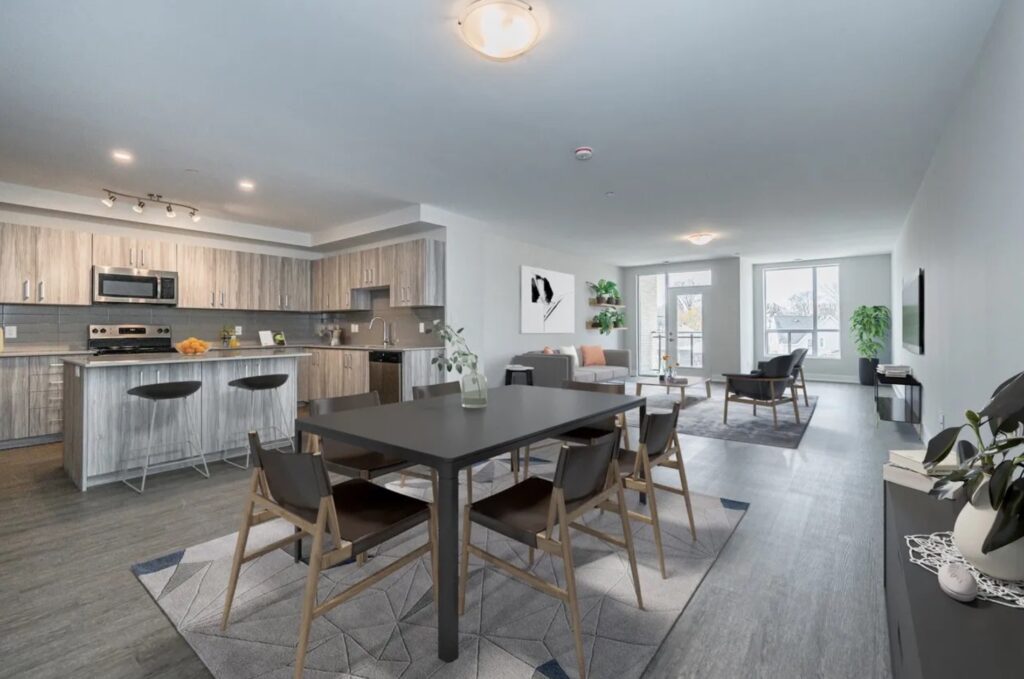
The Problem of “Luxury” Apartments
A simplistic, often-repeated diagnosis of Ontario’s housing problem is that it is a supply-side issue, with the conclusion being that the province needs to remove red tape to allow developers to build more housing units. Mostly absent from most of these discussions is the type and quality of housing needed.
The government of Ontario treats its own housing crisis almost exclusively as a supply-side problem. Ontario’s Build More Homes Better plan reads, “as Ontario’s population has grown, housing construction has not kept pace. Our housing stock has to both catch up and keep up with population growth projections. If this does not happen, prices will continue to rise and it will become even more challenging to find a place to live.” 1
While new detached single family houses do not make sense for dense urban cores, neither do those marketed as “luxury” units. The province needs basic, pragmatic apartments designed in a livable way for families, not luxury condos for single people, which dominate urban development in every major city in Ontario.
For the sake of this article I would like to use The Royal Flats in downtown Guelph, “luxury flats that feel like home” marketed in true SodoSopa fashion, as an example of luxury rental units. When the building was first completed, rental rates at the Royal Flats for their one, two, or three bedroom units were far above the average market prices in Guelph (three-bedroom units still start at $4,700 per month).
Defining Luxury
“Luxury” is a subjective, mostly meaningless buzzword like “gourmet” or “sustainable”, which—in the context of rental housing—is used to justify huge increases in rent and renovictions. What do developers typically include in a “luxury” apartment versus a “basic” apartment? Luxury appears to be a faux-gold approach à la Donald Trump, where most upgrades do not justify the increased rental or purchase prices. Luxury units are simply made to look expensive (though are often cheaply built), and include aesthetic frills to make their exorbitant prices palatable—upgrades which make no difference to those who truly need affordable housing:
- Metal-accented appliances (fridge, stove, faucets, etc.)
- Stone-finished counters
- Fake wood grain laminate and flooring
- Pot lights
- Increased numbers of windows
In examining photos of units in The Royal Flats, we can see this is similar to their approach to luxury.

Urbanization—the percentage of Canadians living in urban centres versus rural areas—is continuing to grow. In 2022, over 13.6 million people in Ontario lived in urban areas, and only 1.4 million in rural areas2. Despite this huge discrepancy, most Canadians still envision detached houses with a large lot when they dream of home ownership. This does not make sense in dense city cores, which is why municipalities favour condominium-style developments for new housing. Densification creates opportunities for home ownership for a much greater number of people, in theory, and more tax dollars for municipalities. But what’s happening—aside from the investor class gobbling up units—is that the “luxury” rent or purchase prices are so high, they present no change from the status quo for those who need housing most, and effectively do not increase the housing supply for the average person. Additionally, contrary to the theoretical solution espoused by the government of Ontario’s official More Homes Built Better plan, luxury units actually place upward pressure on prices, not downwards.
Declining Profit Margins Paradoxically Produce Luxury
The high building costs of multi-unit developments have significantly reduced profit margins, and due to rising interest rates and the unabating rise of land prices and bureaucratic fees and assessments, this is a trend that will likely continue. This poses a problem for profit-hungry developers—why would they build affordable housing when margins are much lower than luxury developments? Here the problem and cause become clear: the housing crisis has created a feedback loop, in which luxury housing is a byproduct. Rising construction costs result in the majority of new developments being built as luxury units to satisfy profit margins, effectively zero affordable housing gets built, the housing crisis worsens from increased demand for basic housing, which drives up land and construction costs further, which results in more luxury units ad inifinitum. The profit motive is fundamentally incompatible with building affordable housing in Ontario’s current real estate market; it simply does not make business sense.
According to a federally funded 2012 report on the business of affordable housing, a simplified economic model demonstrated that “a for-profit developer would need to charge luxury rents of more than double an affordable rent level to reach a minimum acceptable profit margin”, based 2010 Toronto real estate data3. It is fair to assume this problem has only worsened since the publishing of this report. Extrapolating these findings to 2022 average rates, this means that a developer would have to charge $3,558 per month for a two-bedroom apartment in Toronto in order for the project to make financial sense (based on the 2022 average rate of $1,779 determined by the CMHC4)
Unless land and construction costs drop dramatically, it is unlikely the private sector will ever make any meaningful contribution to solving Ontario’s housing crisis—currently it is actively making it worse, and the laissez-faire, “open for business” approach of the provincial government is doing the same. Assuming a profit-driven entity will pursue an unprofitable business is unrealistic. Ontario’s politicians and municipalities have proven to be incapable of making any significant progress with regards to moving the needle in any positive direction when it comes to the housing affordability problem. While the solution to this crisis is not obvious, removing “red tape” for development projects only to dot all available development land with luxury residences is only making things worse.
References
- Government of Ontario. (2023, December 15). More Homes Built Faster. Government of Ontario website. https://www.ontario.ca/page/more-homes-built-faster#section-2
- Government of Canada. (2022, July 1). Annual demographic estimates, rural and urban areas: Interactive dashboard. Statistics Canada. https://www150.statcan.gc.ca/n1/pub/71-607-x/71-607-x2021030-eng.htm
- Black, Jill. (2012, September). The Financing & Economics of Affordable Housing Development: Incentives and Disincentives to Private-Sector Participation. Cities Centre, University of Toronto. http://neighbourhoodchange.ca/wp-content/uploads/2012/11/Black-2012-Affd-Housing-Research-Paper-224.pdf
- Canada Mortgage and Housing Corporation. (2022, April 5). Toronto — Historical Average Rents by Bedroom Type. Canada Mortgage and Housing Corporation. https://www03.cmhc-schl.gc.ca/hmip-pimh/en/TableMapChart/Table?TableId=2.2.11&GeographyId=2270&GeographyTypeId=3&DisplayAs=Table&GeograghyName=Toronto